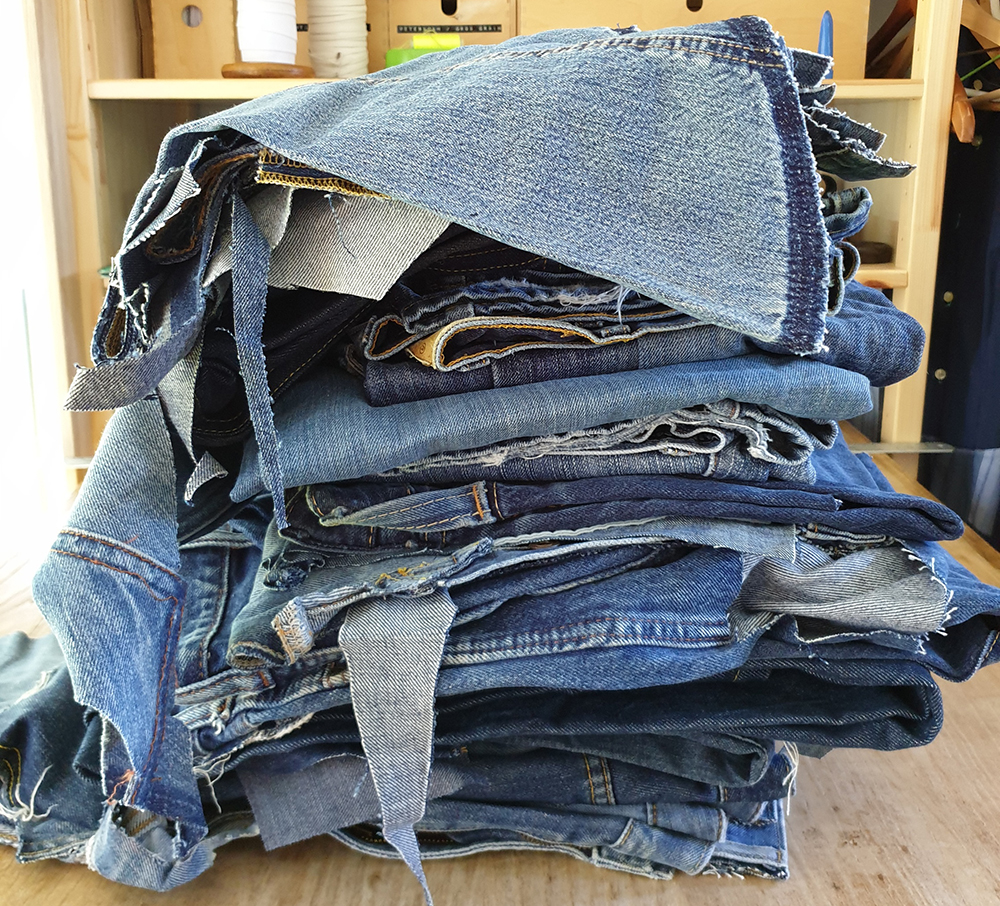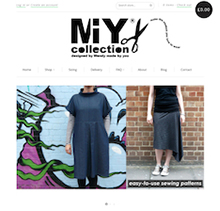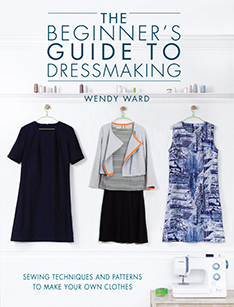I had a lot to say in my new book How to Sew Sustainably, which meant I had to let some things go from the final edit. However, the upside of that is I get to share it with you here!
Today I’m starting with a deeper dive into fabrics. The textile industry is one of the most environmentally damaging in the world and it’s also damaging on a human level. All of the statistics I can find out there are for the fashion industry as a whole, I’ve not yet been able to find any reliable statistics that look at textiles purely produced for the craft market. However, the two are very closely linked and fabric produced for fashion and for craft use the same damaging processes.
As they say: knowledge is power, so my hope is that after reading this you’ll be a bit better equipped to start making more sustainable choices with your fabric selections.
Synthetic vs Natural Fibres
Synthetics (polyester, nylon, acrylic, elastane) have historically been the “bad guys” as they’re derived from oil with all the issues around renewability and environmental impact that comes with it. They don’t biodegrade and there is also growing evidence that as we wear and launder these fabrics they shed micro fibres that can end up in water systems.
However, some natural fibres aren’t completely blameless – cotton growing tends to be done intensively, traditionally with the use of fertilisers which can have negative consequences for farmers and that’s before you even consider how much water is required to grow cotton. Just a quick search online for “Aral Sea and cotton production” will leave you in no doubt about how environmentally damaging cotton farming can be.
Linen and hemp come from fast growing plants, yield more fibre per acre than cotton and use far less water than cotton. Both fibres are also much stronger than cotton, making items made from them more durable and hardwearing. Linen in particular also improves with use becoming softer and smoother. They are often presented as the gold standard of sustainable fabrics. Have a look at the wonderful ‘Homegrown Homespun’ project currently underway in Blackburn for a glimpse of what sustainably produced fabric looks like. It’s the result of an inspired collaboration between Justine Aldersey-Williams of NW Fibreshed, Patrick Grant of Community Clothing and the British Textile Biennial to grow flax, produce linen fibre, make it into denim fabric and finally make jeans, all within a small geographical area.
Silk and wool are both from natural (animal) sources and when produced responsibly it can be argued that they have pretty good sustainability credentials. However, both have been associated with serious animal welfare issues; silk is produced by boiling the cocoons of silk worms (with the worms still inside) and the cruel practice of “mulesing” sheep (most often Merino sheep, without anaesthetic or pain relief) is common in some countries. When it comes to angora “wool” (which is technically fur, not wool) I find it hard to argue that any production of angora on an industrial scale could be considered to not be cruel.
Regenerated cellulose fibres such as viscose, rayon, Modal, Tencel and acetate, are made from processed wood pulp. On the surface they sound better than synthetics, but some of the processing of the wood pulp can be toxic if not carried out responsibly. Find out more about how damaging the viscose industry can be here.
Cupro (often called man-made silk sometimes under the brand name Bemberg) is a similar regenerated fibre but made from cotton linter – a by-product from the cotton industry.
Deadstock Fabrics
The use and promotion of ‘deadstock’ fabrics has risen in popularity in the craft world recently. A few years ago the term was hardly used outside the textile industry and certainly not used to describe retail fabric for home sewing. Now it’s not unusual for fabric retailers to describe their whole stock or sections of it as ‘deadstock’ while shouting about its sustainability credentials. But is it really a sustainable option?
Technically a deadstock fabric is fabric leftover from a production run in the fashion industry which is then sold as retail fabric for home sewing or small production runs by individual designers. Seems like a win win yes? I have mixed feelings about it. On the one hand it’s a great way of accessing ‘on trend’ high street fabrics, getting a more ‘limited’ fabric that won’t be repeated and feeling like you’re contributing to saving textile waste. But on the other it could be seen as just another symptom of the wasteful over-production methods used in the fashion industry and a case of greenwashing – wouldn’t it be better if brands just produced what they ‘needed’ and isn’t having a ready-made market for this over-production simply giving brands an easy quick-fix to a bigger problem?
This post is a great introduction to the concept of deadstock and does a through job of debunking some of the myths that have become attached to it.
How to Make More Sustainable Choices in Fabrics
Given all this you might feel pretty overwhelmed and wondering what you can do to make sure the fabrics you buy are produced as sustainably as possible. Here are my top tips for some easy ways to start making better fabric choices:
- Number 1 – think before you buy!! It’s so tempting (and so easy with online shopping) to build up a huge stash of fabric with no plans for what to do with it all (hands up, I’ve done it myself!), but you’re far more likely to use your fabric if you have a plan in mind when you buy it.
- In synthetic fibre fabrics, look for those made from recycled plastic, you can buy polyester fabrics such as fleece made entirely from recycled plastic bottles.
- In regenerated fibre fabrics (viscose, rayon, acetate, etc), look for those made from sustainable crops – those that are fast growing, don’t consume vast amounts of water and can be easily replenished.
- In natural fibre fabrics, look for linen or hemp and organically grown cotton.
- Shop local. Search out fabrics that are made locally, these businesses are often more transparent about their sourcing and production methods than big business.
- Ask questions of your usual fabric shop. Do they provide any information about where they source their fabrics? Do they know the people they buy from? Are they knowledgeable about fabric, and aware of potential production issues? Do they pile it high and sell it cheap or do they curate and choose their stock wisely?
- Look for artisan and co-operatively produced fabrics. There are organisations around who work with artisan craftspeople, often in poorer countries, to support their traditional textile skills and enable them to earn a living. These are well worth seeking out and supporting. Exercise care though – you want to be sure just how much of your money will be going to the makers, any transparent genuine organisation will make this level of information available.
- Reuse and recycle: clothes, old projects, bedding, table linen, curtains, etc. It may seem overwhelming to have a collection of such disparate fabrics, but use my tips on storing and organising your fabrics coming in my next blog post.
- Keep your scraps and leftovers: from other projects and from recycling garments and other textiles.
Tips on sourcing sewing threads and components are also covered in How to Sew Sustainably.
For more information about the impacts of the fashion and textile industry:
- The fashion industry emits more carbon than international flights and maritime shipping combined.
- Fashion and the circular economy.
- Information from WRAP about the fashion and textile industry.




















Pingback: How to Store Your Fabrics | Wendy Ward